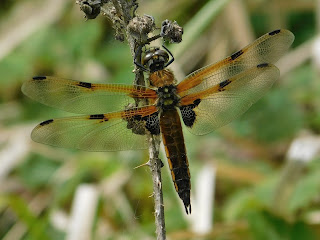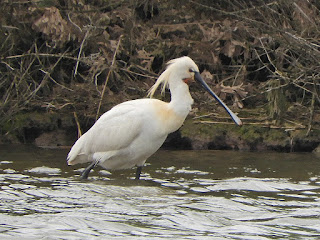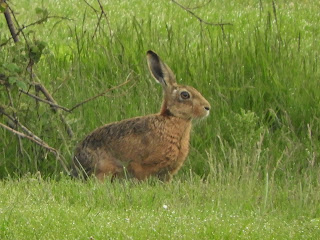After what seems like ages my days of leisurely mooching around doing next to nothing have come to an end and it's time to face up to the harsh reality of going back to work tomorrow. At least the dross weather of last week has been put to bed and I enjoyed another great day of warmth and sun. I spent most of my day wandering around Priors Hall where I enjoyed a peaceful and fairly productive day.
For the first time in what seems like weeks butterflies featured quite strongly with two species new for the year in the shape of Small Heath and Common Blue. Joining them were good numbers of Dingy and about ten Grizzled Skippers though I still can't find any Green Hairstreaks. Other species noted on my travels included plenty of Orange-tips and a few Brimstones.
Best dragonfly was a first for the year Broad-bodied Chaser which was gracious enough to pose for a pic or two. Plenty of Four-spotted Chasers were emerging and I managed to find a few settled ones, most flew straight into neighbouring trees and were lost to view. About six Hairy Dragonflies were on site too though none seemed keen to settle as they patrolled constantly around the edges of the ponds. Many teneral damselflies were taking first flights and they did well to avoid the depredations of the Sand Martins hawking over the area. Commonest damsel was Azure with over a hundred being seen while Large Reds remain numerous too. Only a couple of Blue-taileds were found and a single Red-eyed completed the list.
The only birds of note were a trio of Mandarin Ducks flushed from one of the ponds, they seem to be getting quite regular here. Other wildlife included a Common Lizard, an injured Fallow Deer which appeared to be lame and a brief view of a possible Roe Deer. It's a shame that I couldn't get a better look at the putative Roe as it would have been my first sighting here.
 |
| Blue-tailed Damselfly. |





















































